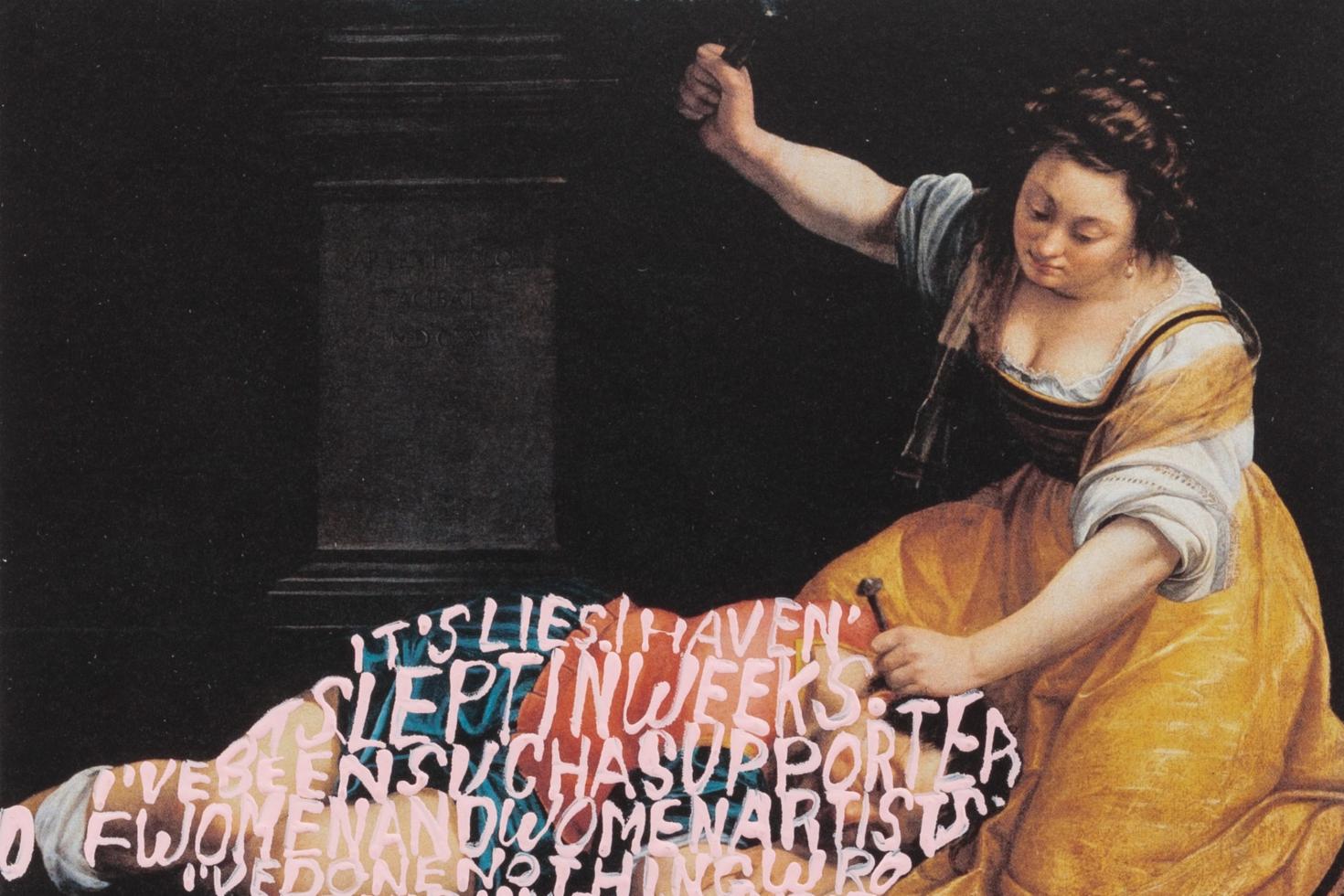The silence surrounding sexual assault seems to have been broken — or, at least, drastically weakened in the past two years with the rise of #MeToo. This newfound freedom brings into question the use of language as both a weapon and a form of healing, especially for artist Betty Tompkins, who’s most recent work, “Women Words,”unearths the troubling lexicon used to describe women.
Tompkins got the idea for “Women Words” in 2002, when she sent an email to a number of her colleagues asking for words they would associated with women, negative or positive. She was awestruck at the plethora of responses, ranging from, “bitch” to “mother.” Tompkins recalls the onset of emotions she experienced while scrolling through the emails, utterly heartbroken at the cruelty she was seeing.
“Heck, some people just don’t like women,” she remembers.
“Women Words” ended up being a collection of around 1,000 pieces, which she meticulously arranged at the Flag Art Foundation space in New York City. Each piece is unique, differing in size, color and content from its neighbors. Despite the incongruity, the sprawling collection as a whole communicates a certain sense of unity: though each component of the whole is different, they each fall prey to degrading language. Perhaps this is meant to emphasize the reality of today; while each woman is an individual, she is still lumped into a whole and is, therefore, subject to scrutiny and crudeness.
Her work, which frequently features text, stemmed from her being “totally disgusted with the discourse of the time, [and how] they would always talk about being able to ‘read’ work. So I thought, let’s give them something to read!” Her collection is blunt in its meaning, leaving little room for interpretation. She communicates reality, which, unlike most art, isn’t always subjective.
In light of the rampant outpour of sexual assault allegations, Tompkins decided to broaden her “Women Words” project, taking the same foundation and transforming it into a new installation, “Apologia.”

“Apologia” takes on the same interesting artistic elements as its predecessor. Tompkins collected a variety of art history books, tearing out pictures of the Mona Lisa, work by Mary Cassatt and other historically significant works from throughout the ages. She recalls a childlike giddiness while doing this; she was reared in a strict household where punishment would ensue if you so much as bent the spine of a book wrong.
Tompkins took these images and began transcribing the different, oftentimes scripted apologies said by men accused during #MeToo. The statements are interwoven into details on the paintings; they spread over blue hoopskirts and nude nymphs, unmissable in their curly pink script. The “Apologia” pieces are a part of a broader collection called, “Will She Ever Shut Up?” which is on display at the PPOW Galleryin New York City.
She defaced these masterful works of art with men’s half-ass statements, a stark parallel to the experiences of some of these women.
Her use of ageless work, ranging from the early 16th century to the 1960s, expresses the idea that sexual assault is just that: ageless. It is indiscriminate and ever-present. Even though women today experience an unprecedented amount of freedom compared to past decades and centuries, it still doesn’t eradicate the possibility of sexual assault. Many people over the course of the last two years have worked to devalue the authenticity of sexual assault victims’ testimonies. The #MeToo movement, the inspiration for “Apologia,” is historically groundbreaking, so it’s apt for Tompkins to use such well-known works for her backdrop.
Tompkins’ eclectic portfolio is glaringly feminist and sex-positive. She was a young female artist in 1960s and 70s New York, the very height of the second-wave feminist movement. Between 1969 and 1973 she worked on a series of sexually explicit sketches, the inspiration for which she got from her husband’s pornographic magazines. When describing this collection, she said, “I’m not interested in nice looking abstractions, I’m interested in art that is tough and challenges me when I look at it.”
And tough it is. These larger-than-life, photorealistic portraits are unmistakable — Tompkins’ keen attention to detail helps to represent reality. However, even as a member of the feminist movement, her work was rejected. The pieces were too progressive, their realistic depictions of sex were far too daring for the time. Not until 2002, 30 years after the collection’s completion, was it finally showcased.
Tompkins understood these pieces to definitely be a dare for her audience, coming face to face with something so gruesome yet simultaneously natural and intimate. Nonetheless, there is a certain beauty in her work; delicate lines all coming together to form a coherent whole. As with all her work, it takes an effort of continually zooming in and out, observing the pieces and the whole each in turn to fully understand the meaning.
All of her work, from her early collections to her current “Apologia” series, all work “to challenge the representation of the female identity, the politics of pleasure, and the role of sexuality in contemporary culture.” There has been a radical shift in the way in which we understand femininity in respect to sexuality — not only in a personal sense, but also in a political and social sense. Betty Tompkins’ goal is to alter the understanding of femininity as a whole, from the language used to represent it and the art used to celebrate it.
















